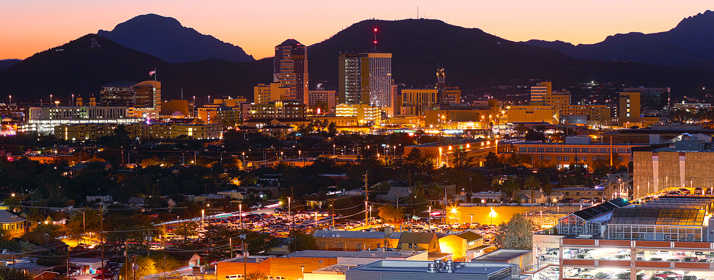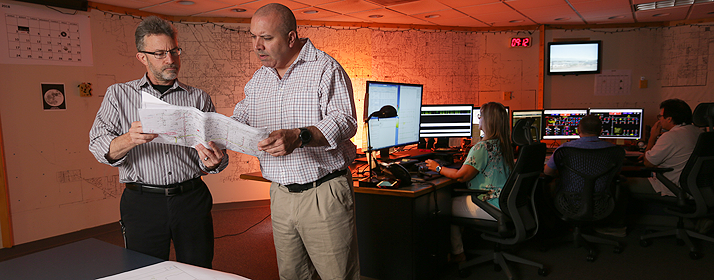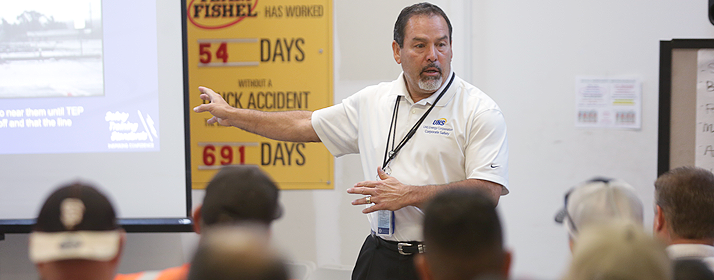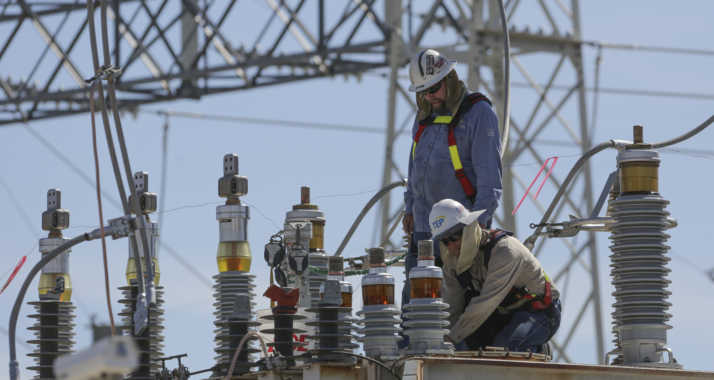
With transmission lines stretching through remote forests and deserts, Tucson Electric Power employees must stay vigilant during wildfire season to make sure electric facilities are safe.
For Kasy Schug, it’s an around-the-clock job to check online maps and monitor first-responder websites for fires that may threaten transmission lines and other assets, such as communication sites.
He stays in regular contact with officials at agencies throughout Arizona and New Mexico, where about 1,512 miles of TEP facilities wind through private, state, federal and tribal land, reaching as far as the Four Corners area.
“We establish strong connections with other agencies to ensure the safety, reliability and efficiency of our services,” said Schug, TEP’s Transmission Vegetation Project Manager. “We must continue to provide reliable, cost-effective power, even when fires threaten our facilities.”
The most critical time is between April and October, when fire season is at its peak.
Throughout the year, TEP ensures that vegetation does not encroach on transmission line routes. To maintain safe operations, the company must maintain clearances that can be as wide as 330 feet in some areas. Aerial inspections are conducted twice a year.
To monitor fires from afar, TEP uses an online map of company facilities with an overlay map of active fires. This helps employees determine if fires are approaching remote facilities and decide if crews need to be dispatched.
Schug stays in contact with fire agencies, the U.S. Forest Service and other first responders throughout the region to coordinate an appropriate response.
In late June, TEP activated its Wildfire Preparedness Plan when a 370-acre fire was reported near Reserve, N.M., coming within a half-mile of TEP transmission lines. U.S. Forest Service fire crews set up a perimeter and dropped retardant to manage the spread of the fire and help protect the lines.
TEP Transmission Circuit Patrolman Cary Stubbs worked in the incident command center to evaluate the danger to company assets and maintain direct contact with Schug and the company’s System Control & Reliability team. Although TEP was prepared to temporarily de-energize the lines, incident command workers decided that was not needed.
“Having an employee on scene made it easier to keep everyone in the loop,” Schug said.
If a transmission line or communication facility were to be affected, TEP has the capability of routing electricity from other sources, said Shannon Breslin, Manager of Land Resources. But doing so for a prolonged period of time can prove costly, damaging facilities and potentially compromising reliability.
“That would be an extreme case scenario,” Breslin said. “TEP’s planning has been exceptional and, as a result, we have maintained consistently reliable service.”






